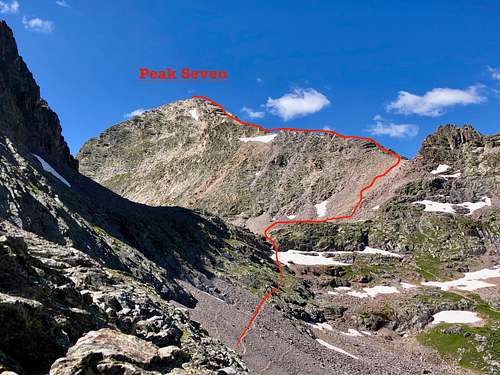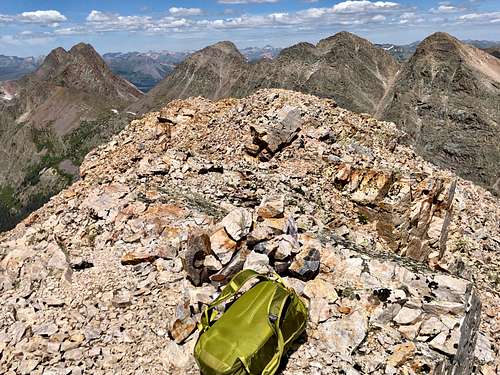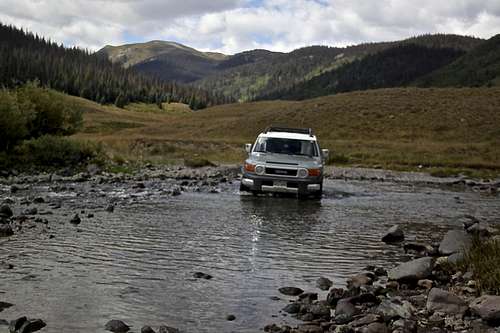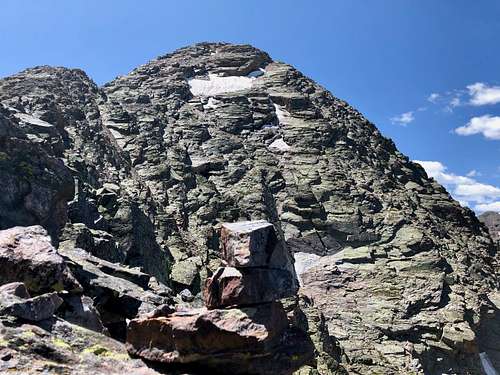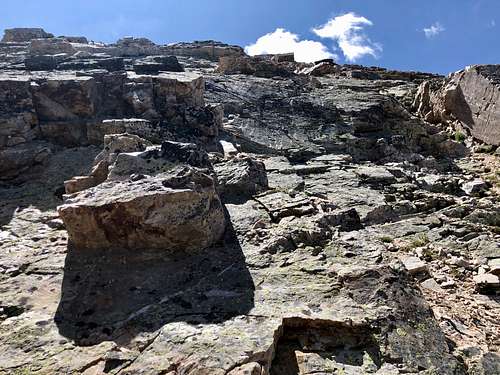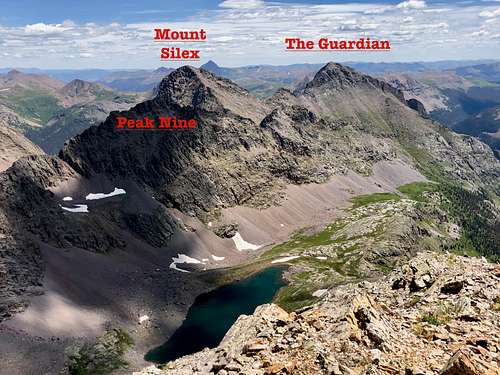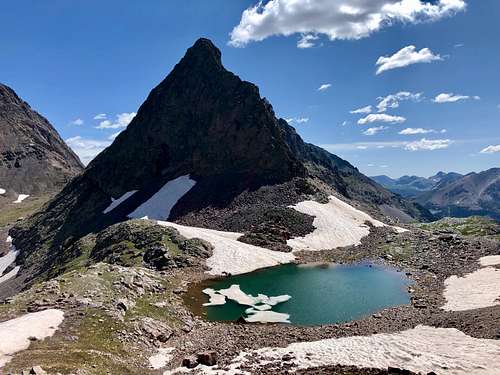-
 5280 Hits
5280 Hits
-
 79.77% Score
79.77% Score
-
 11 Votes
11 Votes
|
|
Mountain/Rock |
|---|---|
|
|
37.66761°N / 107.57371°W |
|
|
San Juan |
|
|
Hiking, Mountaineering, Scrambling |
|
|
Summer, Fall |
|
|
13682 ft / 4170 m |
|
|
Overview
Peak Seven is a remote bicentennial (among the highest 200 in Colorado) peak located in the Weminuche Wilderness. The peak offers solitude, beauty and a pretty nice scramble. It combines nicely with other nearby peaks, e.g. Peak Eight (unranked), Peak Nine, Storm King, Mount Silex and The Guardian.
Peak Seven is the northernmost peak of Needles proper and part of the Storm King Peak Quad. It is possible to ascend this peak as a one day trip, but this requires a long mileage. I recommend a backpacking experience.
The peak is located near the continental divide, and the drainage from Leviathan Creek eventually ends up in San Juan River, Colorado River, and Pacific Ocean. A part of the approach trail if coming from Beartown goes along Continental Divide Trail.
Colorado Rank: 158
Parent Lineage: Peak Six
Wilderness: Weminuche
Class: 3
Nearby Mountains:
- Peak Eight (unranked) 0.44 miles
- Peak Nine 0.76 miles
- Peak Six 0.82 miles
- Storm King Peak 0.98 miles
- Leviathan Peak 1.02 miles
- East Trinity 1.16 miles
- Trinity Peak 1.26 miles
- Vallecito Mountain 1.27 miles
- Mt. Silex 1.41 miles
- Peak Five 1.44 miles
- West Trinity 1.52 miles
- Jagged Mountain 1.63 miles
- The Guardian 1.85 miles
- Peak Ten 1.88 miles
- Peak Four 1.93 miles
- Peak Three 1.99 miles
- Vestal Peak 2.18 miles
- Peak One 2.24 miles
Getting There
Route
I believe there are many ways to reach a summit of a mountain. I chose the easiest one since the peak is remote, I logged over 22 miles in one day and over 8,000 feet in elevation gain. Even this "easy route" involved a lot of class 3 scrambling.
I used north ridge for the climb and the route finding was obvious. There were a few cairns lower down on the ridge, higher up when the slopes became steeper, it was easy to figure out the scramble. The summit has great views, Trinities appear so majestic. There was a small cairn and a summit register.
Red Tape
The peak is located within Weminuche Wilderness, so wilderness rules apply. Weminuche Wilderness is the largest Wilderness area in Colorado.
Follow the seven standard Leave No Trace principles while in the wilderness:
- Plan Ahead and Prepare
- Travel and Camp on Durable surfaces
- Dispose of Waste Properly
- Leave what you Find
- Minimize campfire impacts
- Respect Wildlife
- Be Considerable of Other Visitors.
When to Climb
This peak is very remote. Winter would mean a very long approach through avalanche-prone terrain. The best time to reach this peak is summer and early fall.
Camping
There is a plentitude of backpacking and camping. Nice campsites are along Vallecito Creek, in Stormy Gulch along Trinity Creek, along the unnamed lake just below Peak Seven, Balsam Lake on the west side of Peak Seven.
There is also camping at the Hunchback Pass Trailhead and along the Beartown road.


